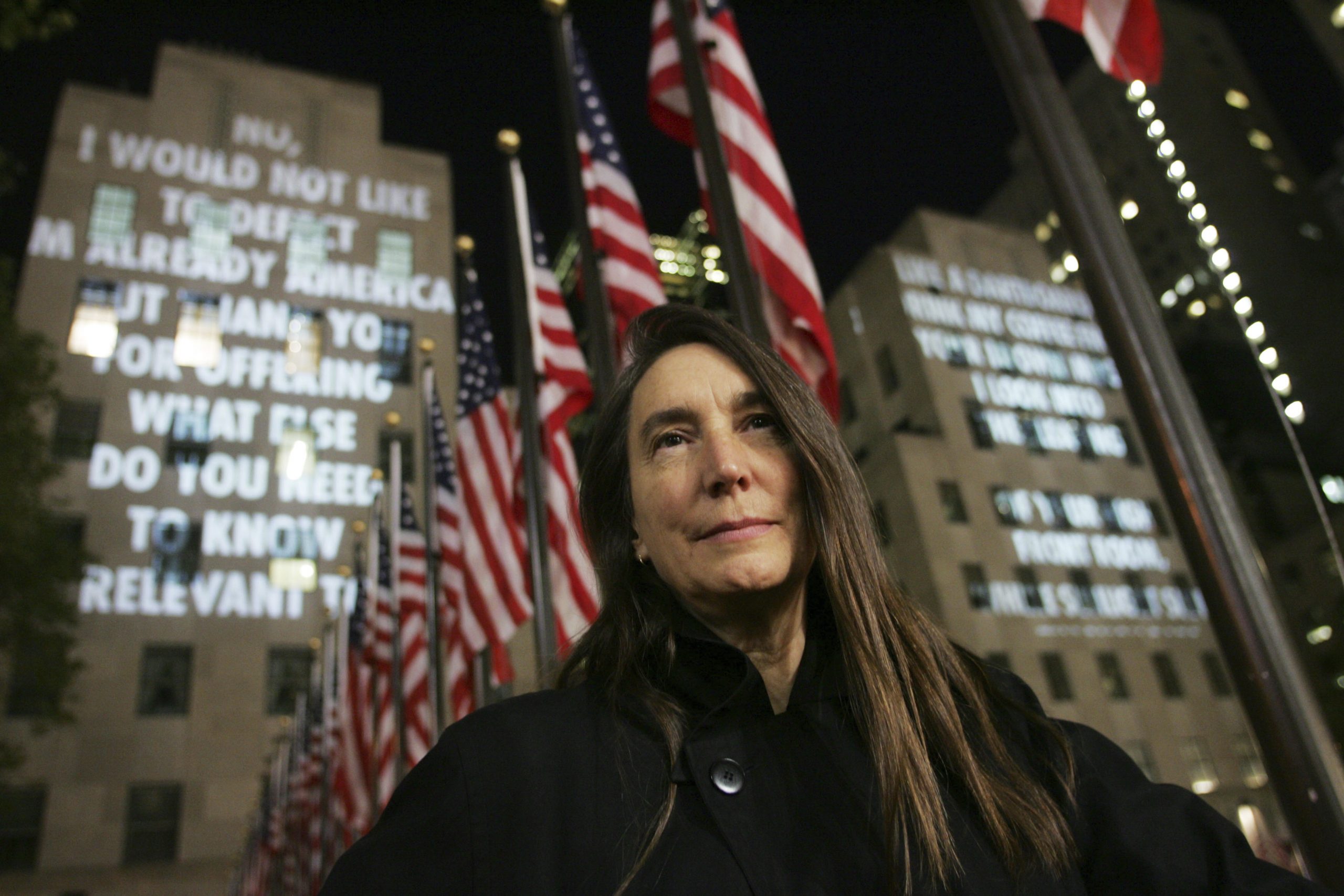Back in the late 1970s and early 1980s, American neo-conceptual artist Jenny Holzer posted terse, provocative statements—her renowned Truisms—on New York subways, billboards, and LED signs. Presented in stark, unembellished language, these messages caused a stir because of how bluntly they merged art with politics. From the uncompromising statements “ABSOLUTE SUBMISSION CAN BE A FORM OF FREEDOM” and “MONEY CREATES TASTE,” Holzer bombarded viewers with unadorned truths that brooked no comfort. Her interventions in public space compelled Americans to reckon with long-festering social rifts and suppressed anxieties.
Around that same time, another personality was building a name in New York: Donald Trump. While Holzer’s words sought to unsettle complacency, Trump found ways to harness controversy for his benefit. He turned spectacle and extravagant branding into a personal calling card. Holzer wanted her statements to puncture the false security of public life; Trump thrived on publicity, capitalising on media frenzy to grow his influence. Over time, their methods and aims made them polar opposites: she used art to question unchecked sexist authority, while he used self-promotion to advocate a gaudy take on power.
Four decades later, Holzer’s warnings converge more forcefully than ever with Trump’s heightened profile. Having already pushed the American system to its limits during his initial tenure, Trump’s second presidency places new strain on core democratic principles. The outrage that once burned fiercely has faded into resignation, and the erosion of oversight has become normalised. Holzer’s probably most well-known statement, “ABUSE OF POWER COMES AS NO SURPRISE”, illuminated Times Square in 1982, resonates as a matter-of-fact daily reality rather than a mere caution. Oversight bodies lose their teeth, scandals blend into each other, and the broader public shrugs in exhaustion.
But Holzer’s work never aimed simply to alarm. Her text-based art sheds light on how deception becomes business as usual. Holzer recognised that if wrongdoing grows familiar, its shock factor diminishes, and citizens accept disinformation and nonsense as part of the landscape. Under Trump, that pattern has hardened. Instead of hidden wrongdoing, it is out in the open, meeting a public already numbed by the repetition of it all.
Reflecting on Trump’s first presidency in a 2023 interview with The Guardian about her show Demented Words, Holzer put it bluntly: “Trump was an abomination. He gave permission and encouragement to some of the worst things—from racism to sexism, to prevarication, to stealing, and on and on. Necessary work wasn’t happening on the environment, on poverty, on education, when it’s quite possible we’re getting very short on time.”
Holzer’s lesser-known maxim, “ALL THINGS ARE DELICATELY INTERCONNECTED,” seems more apt than ever. In just his first month back in office, Trump’s swift intended reimposition of tariffs reignited global trade tensions, his reconfigured approach to Gaza stoked controversy in the Middle East, and his sudden policy pivot on Ukraine reverberated through the EU and NATO alliances. Far beyond the White House podium, these actions disrupt partnerships, erode financial stability, and further complicate international collaboration on vital issues like climate, human rights, and economic recovery. Holzer’s LED art displays how easily misrepresentations can turn into people’s firm beliefs—particularly in an era when a single social media post can roil global opinion. In today’s hyperconnected digital space, damage travels at lightning speed.
Simultaneously, Trump’s political style recasts official agencies as performance arenas, where branding often overshadows policy. The dividing line between serious leadership and publicity-driven theatrics is more tenuous than ever—leaving us to wonder which if any, core democratic standards can endure under these conditions. If Holzer initially aimed to jolt viewers from complacency, now her Truisms read like epigraphs for a political world that has lost sight of truth.
Yet, as bleak as this scenario looks, Holzer never handed out direct remedies in her work. She highlighted symptoms: complacency, hidden injustice, and collective denial. She used spare language to reveal how carefully masked violations of power persist in any democracy—unless people persist in challenging them. In Trump’s second term, these lines seem prescient. When everyone becomes inured to shocks, cynicism replaces outrage. Worse still, cynicism can yield complicity in maintaining a system that normalises breaches of trust.
Ultimately, Holzer’s art and Trump’s presidency raise the same question: How long can a democracy survive when its core tenets seem up for grabs? If Holzer’s text-based pieces once compelled us to see through political spin, then Trump’s polarising stagecraft shows how spin can dominate the conversation. One month down the line in office, the greatest toll from Trump’s second coming is how quickly instability and uncertainty have become the everyday backdrop, wearing down norms and resigning us to a state of constant, low-level turmoil.
Once our shock dissipates, it may be all too easy to embrace the grim notion that “ABSOLUTE SUBMISSION CAN BE A FORM OF FREEDOM”—but at that point, democracy itself may find no one left to defend it.



